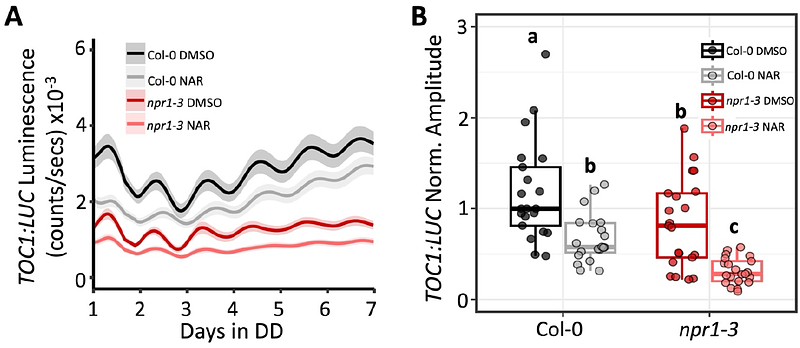Antioxidant properties of dihydroxy B-ring flavonoids modulate circadian amplitude in Arabidopsis

Antioxidant properties of dihydroxy B-ring flavonoids modulate circadian amplitude in Arabidopsis
Littleton, E. S.; Hildreth, S. B.; Kojima, S.; Winkel, B. S. J.
AbstractFlavonoids are an abundant specialized metabolite produced by plants for a range of functions, including pigmentation, hormonal signaling, UV protection, and drought tolerance. We previously showed that flavonoids also influence the circadian clock in Arabidopsis. Here, we report that the antioxidant properties of dihydroxy B-ring flavonoids is responsible for regulating the amplitude of the core clock gene luciferase reporter, TOC1:LUC. We found the amplitude of TOC1:LUC rhythms correlates with the cellular H2O2 content in flavonoid-deficient seedlings. Moreover, reducing production of reactive oxygen species rescued the elevated TOC1:LUC amplitude in flavonoid-deficient seedlings, whereas reducing auxin transport rate, a known function of flavonoids, had no impact on TOC1:LUC amplitude. Interestingly, Ca2+ levels in the chloroplast, but not the cytosol, were also altered in flavonoid-deficient seedlings, hinting at retrograde signaling as a possible mechanism of flavonoid-mediated changes in clock amplitude. This study advances our understanding of the relationship between flavonoids and the circadian clock in plants and deepens our understanding of the mechanisms underlying this interaction.